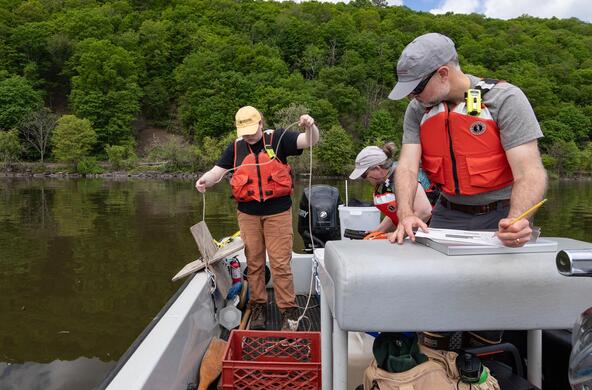- Profile
Rivers carry water, gases, nutrients, and sediments between land and sea. Yet the role of rivers in global carbon and nutrient cycles remains largely understudied. Taylor Maavara uses large-scale models, machine learning, and field work to address this knowledge gap.
Maavara’s work has helped to reveal how river dams impede the flow of carbon and nutrients (such as nitrogen and phosphorus) at local to global scales, with the potential to disrupt fisheries, cause eutrophication, and increase greenhouse gas emissions.
Maavara studies factors that cause rivers to take up or emit greenhouse gases, and how they fluctuate with climate change and other human impacts. Her models of nitrous oxide emissions from rivers, lakes, estuaries, and reservoirs contributed to the first global nitrous oxide budget. This work showed that nitrous oxide emissions — the third most important greenhouse gas, but the most understudied — are increasing at a rate faster than the worst-case scenarios. The research has informed reports by the Intergovernmental Panel on Climate Change, United Nations Environment Programme, and the Food and Agriculture Organization.
With colleagues, Maavara has built models for carbon and nitrogen cycling in watersheds including Colorado River headwaters in the Rocky Mountains, and the Connecticut River in New England. These models track the addition, transformation, and removal of carbon and nitrogen along entire river networks. Through this work, Maavara has shown that bedrock can be an important nitrogen source to rivers, and that in faster-flowing waters, organic carbon is less likely to be transformed into carbon dioxide.
Other projects are focusing on carbon and nutrient dynamics in rivers coming off of melting glaciers on the Himalayas, and the energy balance in rivers across the US, with implications for the global carbon budget.


